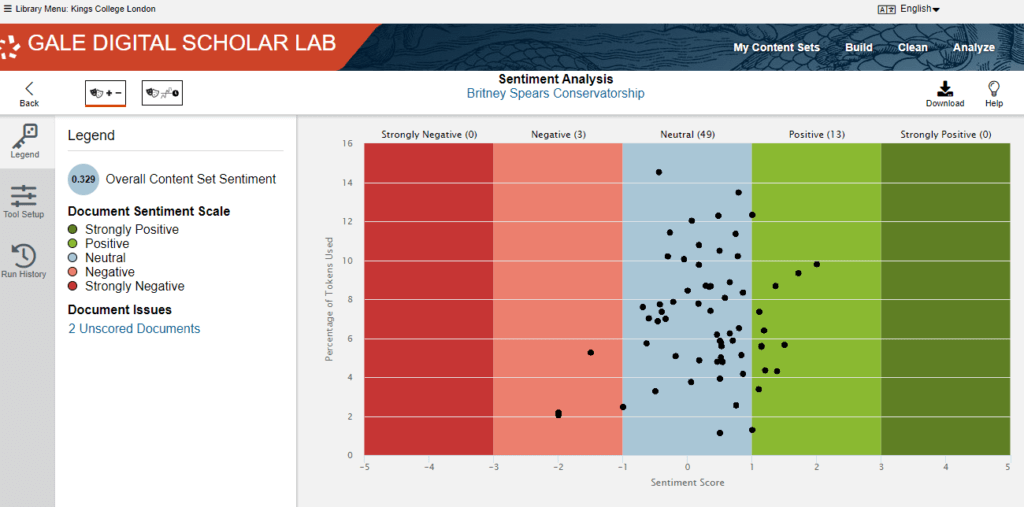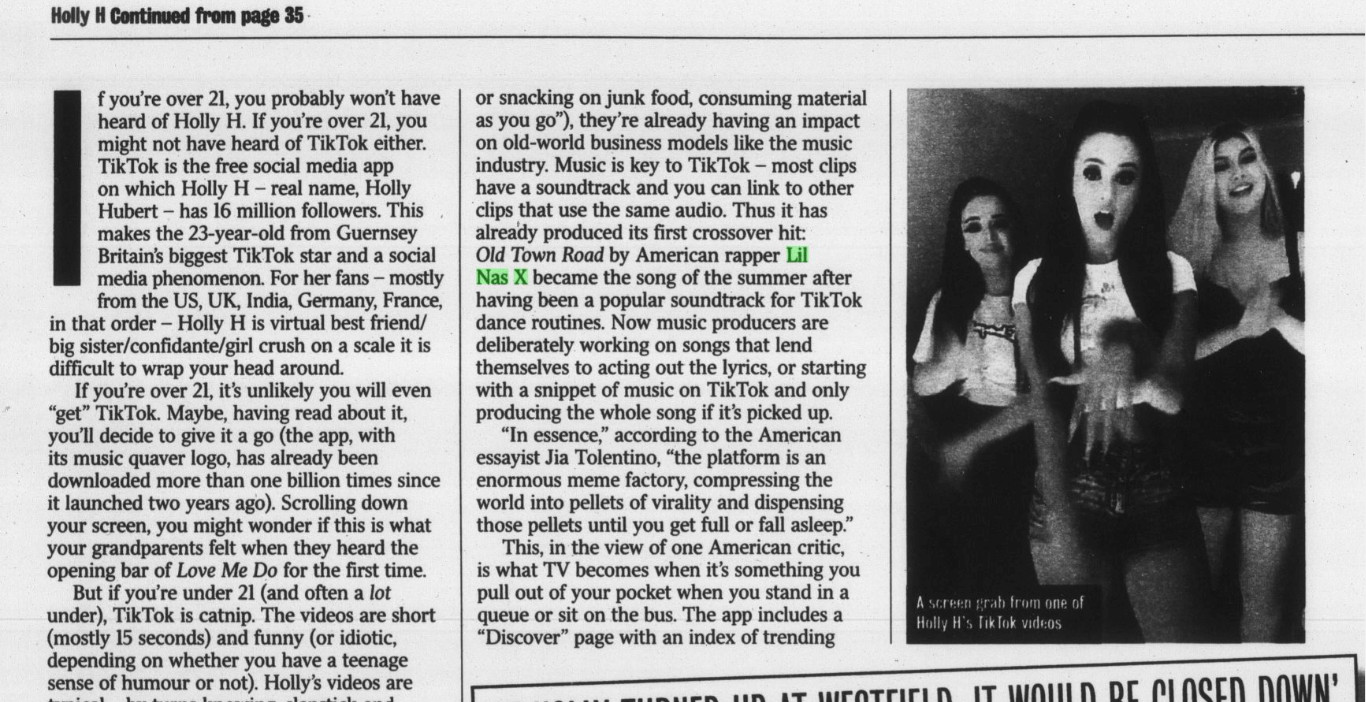

Let's Talk!
If you have questions about using Gale LibGuides or A-to-Z list import files, please feel free to reach out to Gale's Academic Outreach & Engagement team. We are happy to help you customize, copy, share and upload materials to your Institution's site.
 It is difficult to discuss twenty-first century pop culture without mentioning Britney Spears’ name. From her early hits which influenced the revival of teen pop at the beginning of the 2000’s, to her slick electropop offerings in the 2010’s, Spears’ contributions to pop culture are myriad and infectious. However, outside of her artistic legacy, Britney has also shaped culture from her high-profile status by propelling discourses of mental health, the burdens of fame, misogyny and sexuality into mainstream media.
It is difficult to discuss twenty-first century pop culture without mentioning Britney Spears’ name. From her early hits which influenced the revival of teen pop at the beginning of the 2000’s, to her slick electropop offerings in the 2010’s, Spears’ contributions to pop culture are myriad and infectious. However, outside of her artistic legacy, Britney has also shaped culture from her high-profile status by propelling discourses of mental health, the burdens of fame, misogyny and sexuality into mainstream media.
From 2006-2008, Spears struggled with many mental health issues, personal/family problems, and the lack of privacy in celebrity lifestyle. At the time, the press played on the trope of a hysterical woman to sensationalize what was clearly a struggling individual. An example of this comes from the Daily Mail Historical Archive, 1896 – 2016, where the writer describes Britney’s infamous shaving of her head as “Another bad hair day for Britney” The article calls Spears “hysterical” – exploiting the misogynistic trope of female madness – and sensationalizes her behaviors like “storming” out of a club because it suits the article’s central idea that Britney “shows no sign of calming down.”
Spears has recently spoken out about shaving her head, which was a response to invasion of her privacy by paparazzi and fans who touched her hair without her consent. Furthermore, lots of the behaviour described in this article like “wearing large Elvis-style sunglasses” seem more like attempts at protecting her privacy than the hysteria that the writer attempts to portray.
In 2022, we see Britney very differently. The prominence of feminist criticisms of the media’s treatment of female celebrities, engendered by the rise of social media, has recast actions previously deemed “crazy” as responses to trauma and the hardships of fame. Many female artists such as Lady Gaga, Miley Cyrus and Spears herself have spoken out about the expectations placed on female celebrities and the extremely fine margin of error that the media affords to them. This has generated strong fan response on social media, resulting in a campaign to free Britney from the conservatorship she was placed in after the public breakdown foreshadowed in Simpson’s article. Gale resources like Gale Digital Scholar Lab demonstrate these changes in public opinion well – particularly the sentiment analysis tool, which classifies documents based on the affective orientation of the writer.
The visualization below is created from a content set that was constructed based on the term “Britney Spears”, using articles from The Times Digital Archive between 2018 and 2019. It shows a far greater neutrality/positivity of sentiment than the negativity present in articles of earlier years (like in Simpson’s reporting in 2007). Furthermore, The Times has a reputation for output skewed to the political right, so positive sentiment regarding more liberal ideas of feminism and mental health holds undeniable significance and strongly demonstrates that an evolution had taken place in the perception of Spears. The same themes of hardship affected her career in 2018 and 2019, as she was still under her father’s conservatorship, but the public reaction had transformed.

A likely reason for this evolution is the rise of social media, which engendered greater fan reaction to celebrity lifestyle. By the 2010’s, journalists did not have the full monopoly to comment upon those struggling in the spotlight as they had done in the past – fans and the public could also now contribute to the online discourse. The fact that it was Britney’s own fans who began the #FreeBritney movement to terminate her father’s conservatorship indicates that social media and public reaction played a greater role in the affective orientation of popular culture, and can explain the change in perception found mapped across Gale’s newspaper archives. Through Britney, we can see how popular culture was no longer about celebrity lifestyle and journalistic commentary, but also political activism, fan engagement and reaction.
 Lil Nas X’s rise to fame also embodies the power of fan engagement. Nas’ 2019 breakout hit, “Old Town Roads”, became the longest running number 1 hit on America’s Billboard Hot 100 chart and made him one of the first openly gay black artists to impact the mainstream so pronouncedly. Writing for The Times in 2019, Louise France describes how fan engagement on social media pushed Nas to the top.
Lil Nas X’s rise to fame also embodies the power of fan engagement. Nas’ 2019 breakout hit, “Old Town Roads”, became the longest running number 1 hit on America’s Billboard Hot 100 chart and made him one of the first openly gay black artists to impact the mainstream so pronouncedly. Writing for The Times in 2019, Louise France describes how fan engagement on social media pushed Nas to the top.
France’s article revolves around Gen-Z and use of TikTok – how young people are making money out of short video clips set to music on the new social media app. She states that “Music is key to TikTok” and explains how Lil Nas X’s “Old Town Road” became “song of the summer” through the app. From France’s insight, it is possible to discern the vision that Nas held. As a minority who would struggle to attain fame via traditional routes, he broke the mainstream by capitalising on the determining influence of fan engagement that has marked contemporary pop culture. France herself even observes a paradigm shift from Nas’ success, stating that music producers “deliberately” work on songs for TikTok and only complete them if the song is “picked up.”
In this way, the influence of social media and Nas’ legacy exemplifies the transformations in pop culture of the twenty-first century; as was the case with Spears, for whom cultural attitudes platformed by fans influenced her public perception as well as that of pertinent political issues like feminism and mental health. Lil Nas X appealed to the potency of fan engagement online to similarly gain public recognition, but equally propel political issues like LGBT+ and black representation into mainstream culture. Celebrity has shifted from the sublime and unattainable performer on MTV to the familiar, the diverse and the human who is only a tweet away.
Moving forward, this dynamic of output and interpretation in the popular sphere will be fascinating to follow and analyze, and Gale’s resources can assist and benefit investigations into the evolution of popular culture, from the beginning of the new millennium until today.
The content of this LibGuide was adapted from the original author’s blog post which can be found here. Some of the author’s original words have been edited to accommodate general research inquiry related to the topic.
Gale is committed to helping students discover research insights to advance learning and research. Gale Ambassadors are students who work within their own university to increase awareness of the Gale primary source collections available to their fellow students. Our Ambassadors study a variety of different disciplines, and all are open to receiving thoughts or questions from other students at their university about Gale Primary Sources.